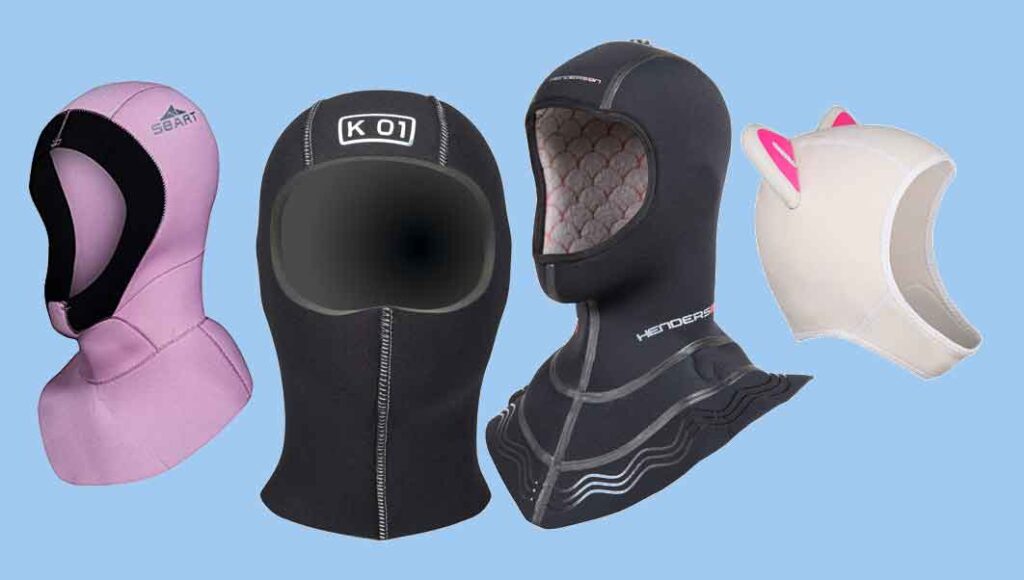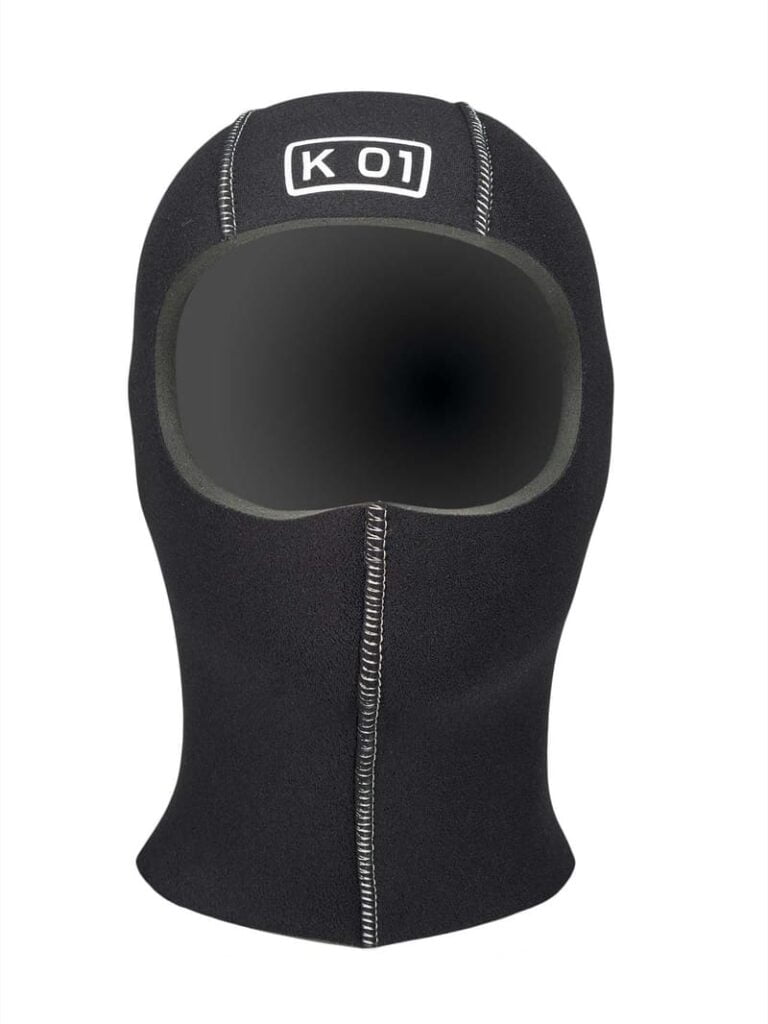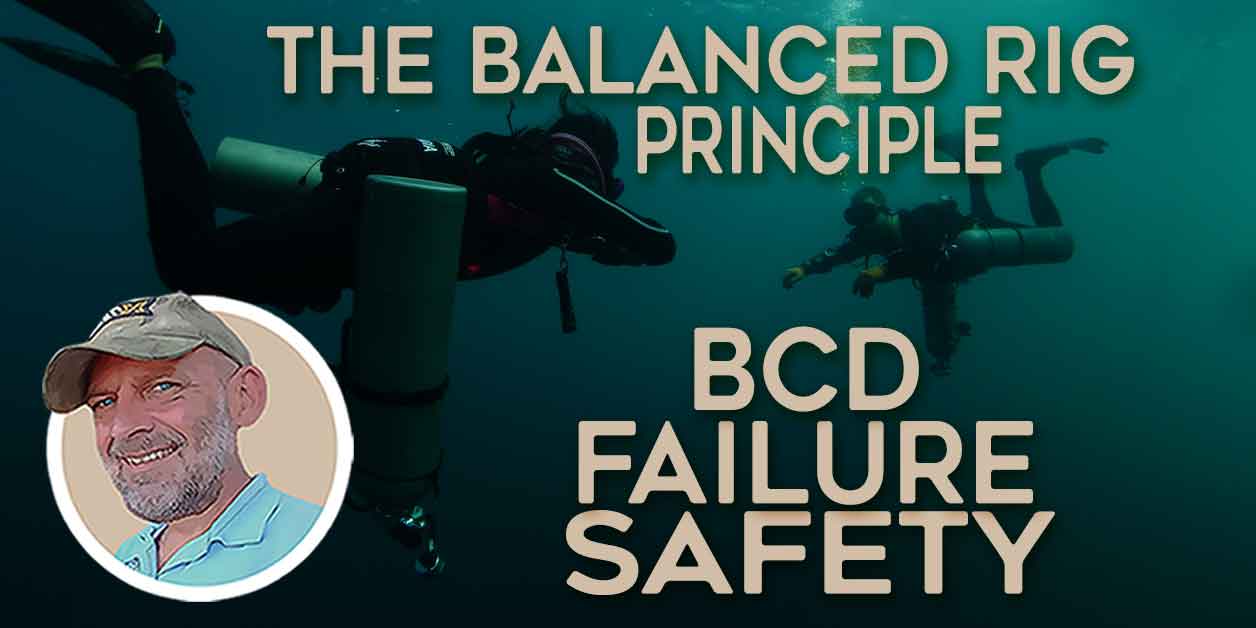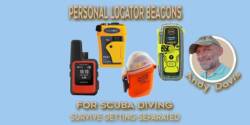A Diving Hood Buyer’s Guide: Stay Toasty, Dive Cozy
As a scuba diver, it is essential to equip yourself with the right gear to ensure a safe and enjoyable experience. One crucial piece of equipment that often goes overlooked is the diving hood: having the right headgear can make all the difference.
In this comprehensive guide, I will dive deep into the world of diving hoods, hooded vests, and dive beanies. Learn about various options available to you, uncovering the unique advantages and potential drawbacks of each. Gain the knowledge you need to make an informed choice, covering essential factors like materials, design, features, and thickness.
So, let’s dive in and explore how to stay comfortable, warm, and cozy on your underwater adventures.

Why are diving hoods beneficial?
Before we delve into the details of choosing a hood, let’s understand why it’s essential. When you’re submerged in water, your body loses heat more quickly. Even though the air temperature might be very warm, being submerged in water can chill you 20 times quicker than in the air.
Your head and neck are not well insulated with body fat, making them particularly vulnerable to heat loss. A dive hood provides insulation for your head and neck, significantly reducing heat loss and ensuring a warmer and more comfortable dive.
What are the drawbacks of diving hoods?
While diving hoods keep you warmer, they can also come with some potential drawbacks:
- Claustrophobia: Some divers, especially those new to diving, may find hoods claustrophobic.
- Limitation of Head Movement: Hoods might limit your head movement, which can be challenging when trying to maintain awareness of your surroundings.
- Hearing Impairment: Diving hoods can also muffle your hearing.
- Equalization Issues: Some divers experience difficulty with equalization when wearing a hood due to increased pressure on the ears.
Factors for choosing the right diving hood
Choosing the right diving hood ultimately boils down to finding a balance between warmth, fit, and coverage. It should be comfortable, provide ample warmth, and offer sufficient freedom of movement.
1. Diving Hood Material
Most dive hoods are crafted from neoprene due to its flexibility and excellent heat retention properties. However, some warm-water hoods are made from fleece-like materials. If you’re diving in colder waters, a thicker neoprene hood is ideal as it warms the water trapped between the hood and your skin, providing extra insulation.
- Neoprene: Neoprene is the usual material for most dive hoods because it’s flexible and excellent at retaining warmth.
- Fleece-type Material: Some warm water hoods are made with fleece-type material.
A thicker neoprene hood is great for colder dives as it warms the water between the hood and your skin, providing a warmer hood. But remember, while a thicker hood means more warmth, it might also limit your freedom of movement. If you need more insulation but desire freedom of movement in your head, you should opt for hoods with higher-quality neoprene; although these tend to cost more.
Two reputable brands that sell fleece-style hoods
1. Fouth Element: The Themocline hood is lightweight, machine washable, neutrally buoyant, and equivalent to a 2mm neoprene
2. Sharkskin: The Chillproof hood is 100% windproof and breathable. It comprises a 3-layer composite material with the thermal properties of 3mm neoprene.
2. Diving Hood Thickness
Diving hoods are available in various thicknesses, typically ranging from 3mm to 7mm or more. The thickness of the neoprene affects its insulating properties. Thicker neoprene provides better insulation in colder waters, while thinner neoprene offers greater flexibility and is suitable for warmer conditions.
Here is a general guideline for selecting diving hood thickness based on water temperature:
- Warm Water (30c/86°F and above): A hood may not be necessary unless the diver is exceptionally susceptible to cold.
- Cool Water (21-29c/70-85°F): A thinner 3mm neoprene or fleece diving hood can add beneficial protection from cold.
- Cold Water (Below 20c/69°F): A thicker 5-7mm neoprene diving hood is recommended to retain body heat and prevent hypothermia.
Remember that personal tolerance to cold varies and that additional features, such as hood linings and seals, can add to the insulation provided by a hood.
Warm Water
Cold Water
Very Cold Water
3. Neoprene Quality
The quality of neoprene used in diving hoods varies. High-quality neoprene provides more freedom of movement and comfort. Neoprene offers superior insulation if combined with additional features like sealed seams or plush lining.
4. Lining Materials:
Some neoprene diving hoods have lining materials like fleece or plush on the interior. These linings add extra warmth and comfort, making them suitable for colder conditions.
5. Seams
The seams of diving hoods are often glued and blind-stitched or flat-stitched to prevent water from seeping in. This enhances the hood’s waterproofness and insulation.
6. Hood Design and Fit
Diving hoods come in various designs, including full hoods that cover the head and neck or beanie-style hoods that cover just the head. The fit should be snug but not too tight to maintain insulation and comfort.
Do I need a short, long, or bib neck design for my diving hood?
- Short Neck Hoods: Short neck hoods allow more water to flush under the hood and reduce thermal protection. As such, they are best for warm-water diving, offering the greatest freedom of movement for the head.
- Long Neck Hoods: Long neck designs tuck into your wetsuit or overlap your drysuit neck seal. This reduces water flushing through the hood, improving thermal protection for cold water diving.
- Bib Designs: These provide maximum insulation but the least freedom of movement for the head.
Short-neck Hood
Long-neck Hood
Bib-style Hood
Head Coverage:
The amount of coverage a dive hood provides is also crucial:
- A hood that covers more surface area of your head, neck, and face will keep you warmer, but should not compromise your movement.
- Diving hoods intended for cold water cover more of the diver’s cheeks, jaw, chin, and forehead, ensuring very little of the face is exposed to the cold.
Vented or Unvented Hoods:
Vents allow trapped air bubbles to escape, ensuring a more comfortable and secure fit. Without vents, the hood may trap your exhaled bubbles and expand above your head like a balloon.
Diving Beanies and Novelty Diving Hoods
A diving beanie, also known as a neoprene beanie or dive cap, is a very minimalist type of diving hood. They typically only cover the scalp and ears, offering a small boost in thermal protection for tropical water diving.
- Materials: Diving beanies are commonly constructed from neoprene or lightweight fleece materials.
- Thickness: The most common neoprene thickness for a diving beanie is 2mm.
- Features:
- Most diving beanies are secured on the head using a chin strap with velcro closure.
- Some diving beanies (dive caps) have a brim to protect the eyes from the sun when at the surface.
- Novelty diving beanies are available, with cartoon ears etc.
Hooded Vests
When you crave a little extra warmth during your dives, hooded vests step in as valuable supplements to your wetsuit. These versatile additions not only provide thermal protection for the head and neck but also enhance overall warmth by adding crucial torso insulation.
Typically designed as a sleeveless vest with an integrated hood, they effectively cover the head, neck, and chest. Here’s a quick look at what makes these vests a smart choice:
- Materials: Hooded vests are commonly constructed from neoprene or fleece-type materials, both known for their insulating properties.
- Thickness: Neoprene hooded vests are available in various neoprene thicknesses, typically ranging from 3mm to 7mm. This allows divers to select the ideal insulation for the water temperature.
- Seals and Linings: As with regular dive hoods, some hooded vests are offered with seals and fleece linings for increased warmth.
- Stand-Alone Comfort: For warm-water dives where a full wetsuit isn’t required, hooded vests can be worn independently, providing divers with flexible options.
Popular Diving Hood Brands
Fourth Element Diving Hoods
Waterproof Diving Hoods
Bare Diving Hoods
KS01 Diving Hood
KS01 hoods are highly regarded amongst technical and cave divers for quality and fit.

Trying on a diving hood
A well-fitting dive hood strikes a balance between snug fit and comfort.
If you need a hood for diving in cold water, it should provide a snug fit around your cheeks and jaw while adequately covering most of your forehead.
However, it shouldn’t feel excessively tight, causing discomfort around your throat or face. If it does, consider choosing a larger size or different design.
Remember, a hood that is too loose won’t offer the protection you need, as water can freely enter and exit, compromising your warmth.
Follow these steps to find the perfect fit:
- Try on several dive hoods to find the one with a snug but not overly tight fit.
- Ensure that you have enough freedom of movement for your head.
- The hood should create a seal around your face and neck to minimize water entry and exit.
- Avoid overly loose hoods, as they won’t effectively protect you from the cold.
- When trying on hoods, make sure that they don’t interfere with the seal of your mask.
- If you have long hair, make sure the hood can accommodate it comfortably.
Tailoring the Fit of a Diving Hood
You may have selected the most comfortable diving hood available, but still feel a need to tailor it better. There are two methods for optimizing the fit of your diving hood:
- Trimming Your Diving Hood: Some divers have successfully improved the fit of their diving hoods by carefully trimming them at the neck, or around the face. Cutting along the seal’s edge, away from the mask line, can relieve pressure and make the hood fit better.
- Stretching Your Diving Hood: If the hood is a little tight around your neck, you can stretch it. Simply put the hood over a suitably sized object, such as a diving cylinder or football, and leave it for some hours or days to stretch.
Mask Strap Under or Over a Diving Hood?
Wearing your mask under or over a diving hood is a matter of personal preference and comfort. Both methods are commonly used by divers, and the choice ultimately depends on whether the dives you conduct prioritize the security of the mask or comfort and ease.
Wearing the mask strap over the hood:
- Advantages:
- The easiest removal/replacement and clearing of the mask.
- It can provide a more secure seal between the mask and your face.
- Solves the problem of mask straps pulling or tangling with long hair.
- Disadvantages: A less secure method with more likelihood of the mask strap coming off your head.
- Best suited for: Diving in calm water and recreational dives where losing a mask would not be a potentially catastrophic issue.
Wearing the hood over the mask strap:
- Advantages: This method is the most secure and significantly reduces the risk of accidentally losing the mask.
- Disadvantages:
- The mask strap breaks the seal of the hood, reducing the thermal protection efficiency.
- Head movement may break the mask seal and cause flooding.
- It prevents the option of adjusting your mask strap tightness during the dive.
- Problematic if you have a snorkel attached to your mask strap.
- Best suited for: Diving in rough surface conditions or strong currents. Technical, cave, and CCR diving where mask loss is a serious safety problem.
Ultimately, the choice between wearing the mask under or over the hood is a personal preference, and you should choose the method that feels most comfortable and secure for your specific gear and diving conditions.
Ear Equalization with a Diving Hood
A snug-fitting hood can restrict the movement of water near the ears, making equalization more challenging. To address this issue, you can:
- Insert a finger under the hood near the ear to allow water to move into the ear canal more easily.
- Some divers cut a small hole inside of the hood near the ear canal to facilitate water movement. Cut through the inner lining and neoprene while leaving the outer protective fabric intact.
Diving Hoods and Cold-Sensitive Ears
Cold-water diving can lead to ear problems for some divers, both in and out of the water.
- Problems may include increased vulnerability to ear infections, earache, and hearing loss.
- Wearing a dive hood can help alleviate these problems
- Also, consider using specialized protective earplugs.
- Keep in mind that hoods and earplugs both reduce hearing, so stay vigilant for visual signals dive group.
Diving Hoods and Long Hair
Diving hoods are useful for people with longer hair as they keep hair contained and out of your face.
- However, neoprene can pull against hair, so it’s a good idea to tie your hair back into a ponytail or bun before putting on your hood.
- You can also wear a spandex or nylon cap over your hair to prevent pulling and add to the hood’s warmth.
Care and Maintenance for Your Diving Hood
Wetsuit hoods are made from neoprene, so you can care for them the same way as your wetsuit:
- Wash them thoroughly after every use and let them dry completely before storage.
- For frequent divers, simply soak your hood and wetsuit in cool water and allow them to dry.
- Occasionally, give them a thorough wash with wetsuit shampoo to ensure cleanliness and freshness.
Diving Hoods and Hypothermia
Diving in cold water exposes you to the risk of hypothermia, a condition where the body loses heat faster than it can produce it. Wearing diving hoods, along with other thermal protection gear like a thick wetsuit or drysuit, gloves, and thick booties, is crucial in preventing hypothermia during cold-water dives.
- Hypothermia becomes a concern if your core temperature drops below 35°C (95°F), leading to symptoms such as shivering.
- If chilling continues, around 28°C (82°F), there is a risk of serious cardiac complications.
So, investing in a quality diving hood is not just about comfort; it’s about your safety and well-being while exploring the underwater world.
Choose the Right Diving Hood
Regardless of whether you’re a seasoned diver with countless dives under your belt or someone preparing for their first dive, the importance of the right headgear cannot be overstated.
This article has described the various headgear options at your disposal. We’ve not only uncovered the unique advantages each offers but also taken a close look at any potential drawbacks. More importantly, we’ve armed you with the knowledge needed to make an informed and confident choice.
From understanding the critical role of materials to appreciating the nuances of diving hood design, features, and thickness, you now possess the tools to select dive headgear that fulfills your needs as a diver.
So, as you equip yourself with the dive gear, remember that the right headgear can truly make all the difference, ensuring you stay comfortable, warm, and cozy throughout your diving adventures. Happy diving!
About The Author

Andy Davis is a RAID, PADI TecRec, ANDI, BSAC, and SSI-qualified independent technical diving instructor who specializes in teaching sidemount, trimix, and advanced wreck diving courses.
Currently residing in Subic Bay, Philippines; he has amassed more than 10,000 open-circuit and CCR dives over three decades of challenging diving across the globe.
Andy has published numerous diving magazine articles and designed advanced certification courses for several dive training agencies, He regularly tests and reviews new dive gear for scuba equipment manufacturers. Andy is currently writing a series of advanced diving books and creating a range of tech diving clothing and accessories.
Prior to becoming a professional technical diving educator in 2006, Andy was a commissioned officer in the Royal Air Force and has served in Iraq, Afghanistan, Belize, and Cyprus.
In 2023, Andy was named in the “Who’s Who of Sidemount” list by GUE InDepth Magazine.
Purchase my exclusive diving ebooks!
Diving Hood FAQs
Diving hoods cover the head and neck, and some include bibs that extend to the upper chest. In contrast, dive beanies only cover the scalp and ears, being secured by a velcro-closure strap.
A diving hood contributes to a diver’s thermal protection; helping to keep them warm. Additionally, it can help protect cold-sensitive ears and keep long hair from getting tangled.
Whether you need a dive hood depends on the water temperature and personal comfort. In colder waters or if you’re susceptible to getting cold, a dive hood can significantly enhance your comfort and safety.
A diving hood needs to be snug to stop water flushing into the hood. However, it should not be so tight that it constricts the face or neck uncomfortably or restricts freedom of movement of the head.
It is normal to wear a hooded vest underneath your wetsuit. This helps to reduce water flushing into the hood, which reduces insulating efficiency.
Originally posted 2023-09-22 15:33:09.















